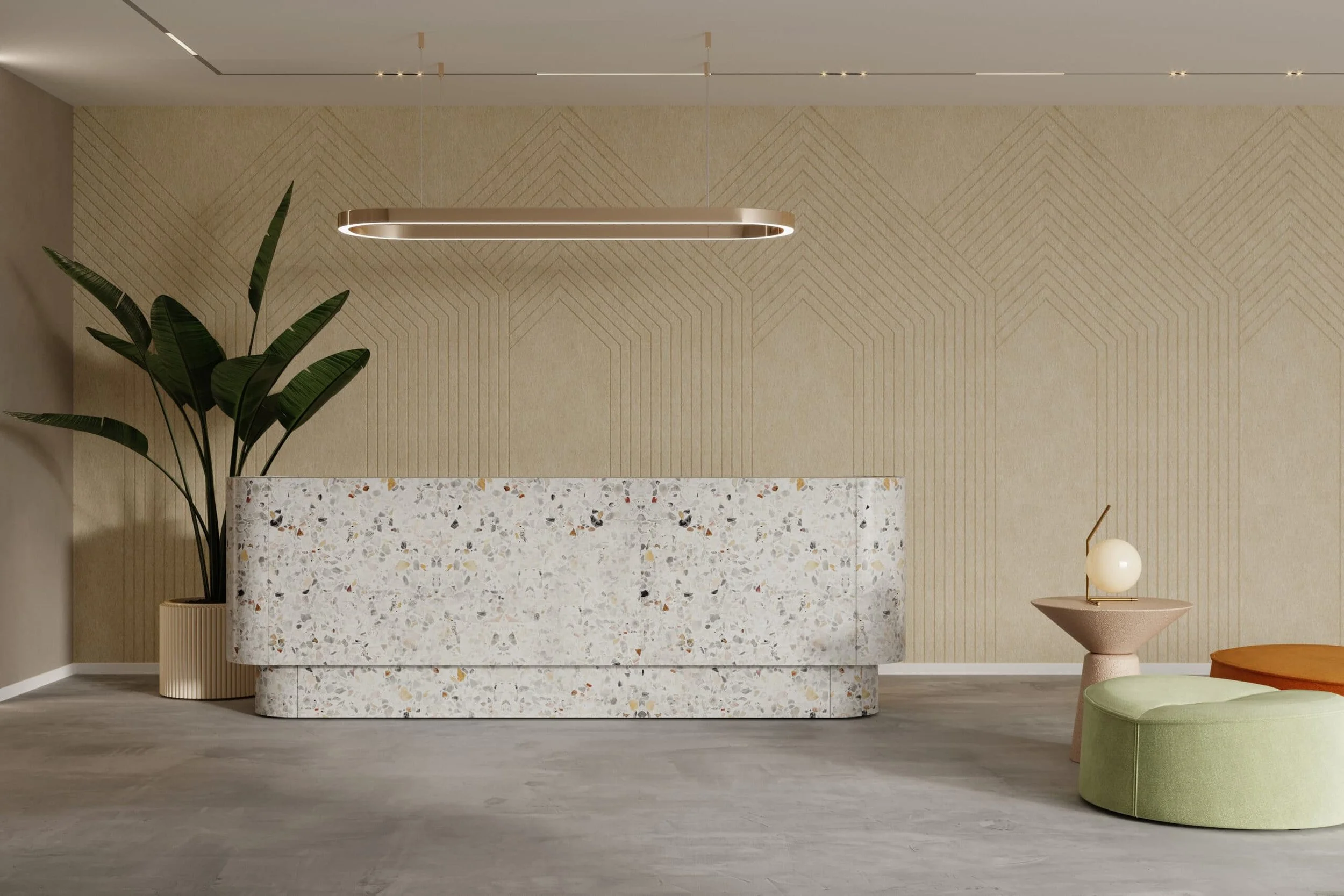Where to Place Acoustic Panels - Acoustic Design for Beginners.
Acoufelt Fracture Panels
Dealing with noise issues? Wondering where to place acoustic panels in your room? Interested in controlling interior noise? Don’t know where to start? The Gaus Acoustics team is here to help!
This beginners guide to acoustic design is meant to help shed light on some of the most basic best practices for treating the most common noise problems we deal with in built spaces. The hope is to help everyday people understand the fundamentals of acoustic treatment, and help them avoid some of the most common pitfalls we’ve seen in our years of acoustic design experience.
Please note that this guide is in no way an all-encompassing tool for understanding the nuances of acoustic design. The movement of sound is a complex matter of physics, and acoustic professionals often dedicate their entire careers to understanding and applying the finest of scientific detail in relation to acoustic engineering.
But hopefully, this guide can help even the most inexperienced among us feel at least slightly more comfortable as they go about adding acoustic treatment to the spaces they occupy.
Where to Place Acoustic Panels - Introduction
When it comes to controlling noise, acoustic panels are among the first tools we look to. They’re simple to install and they can go almost anywhere. Not all acoustic panels are built the same, (which is why we’ve published a helpful guide for choosing acoustic panel styles) but even when you find the right ones for your space, knowing how many you need, and where to place them can be equally or even more important.
The answer isn’t always straightforward, but there are a few basic principles that can help guide your project to success. Let’s jump right in!
*Disclaimer: Each space is built differently, and there is no one size-fits-all solution to any noise problem. The advice given in this blog is meant as general best practice, and is not to be taken literally or as a guarantee of effectiveness if applied to a real-world scenario.
Step 1: Identifying the KIND of Noise Problem
For most people, when they hear unwanted noise, they just want it gone as quickly and as simply as possible. But noise problems come in all shapes and sizes, and unfortunately there is not a one-size-fits-all solution to each of them.
Acoustic panels are primarily designed to solve issues with interior acoustics. Namely, excessive reverberation, and overall noise levels on the interior of a space. They’re great for classrooms, recording studios, conference spaces, auditoriums, offices, lobbies, and the like.
But if your issue is sound leaking from one space to the next, hearing road noise inside your apartment, or a strange rattle in your walls or ceiling, regular acoustic panels aren’t likely to solve the problem. Those are generally going to stem from structural or mechanical issues, and will require the replacement of windows, treatment added to the inside of your walls, or vibration isolators installed on your HVAC system.
In these cases, adding Acoustic panels to the wall may still make a noticeable difference to the sound of your space, but not in the way you intend. Those annoying sounds will likely still be audible, but the room will likely sound quieter at rest, and sounds that originate from inside the room will likely have a higher fidelity, which may only make those annoying sounds more noticeable.
Important Note: Determining how much Absorption you Need
Now that we’ve narrowed down the noise problems that panels can help with, the logical next questions are usually: how many panels do I need? What size? How thick? What kind of material? Etc.
These are all great questions, and unfortunately, the answer to each is the same, unsatisfying: “It Depends”.
But one thing we should get out of the way before we go further, is that we should think about quantity in terms of “How many surfaces do I need to cover?” as opposed to “How many panels should I buy?” If you’ve got a noticeably reverberant room, unfortunately throwing up four 2’ x 2’ squares most likely will not make a noticeable difference. Neither will 2’ x 4’ rectangles.
Generally, in order to make a real, noticeable impact on the reverberation in a space, we’re going to need to cover a full wall, floor or ceiling surface, and oftentimes more than one.
Sometimes its covering one full wall, and portions of another. Sometimes its treating the full ceiling and part of each wall. But in terms of order of magnitude, we’re usually looking at upwards of 25% room coverage in absorptive materials for a noticeable impact.
Step 2: Examine the Shape and Materials of the Room
The types of rooms that most often experience interior noise issues and would benefit from the addition of acoustic panels tend to feature lots of hard surfaces. Hardwood, Tile or Cement floors. Lots of glass, drywall, metal and wood features. They also tend to be more voluminous than other rooms - high ceilings or long distances between walls.
These types of rooms allow sound to travel unabated for long distances. Each individual sound stays in the air for a prolonged amount of time, creating clear, distracting echoes that we call noise pollution. That noise pollution can make it difficult to understand language, concentrate and communicate.
The idea is to soften the hard surfaces, fill the space, and condense the amount of area that is available for sound to move freely. We need those sound waves to become absorbed or diffused before they’re allowed to bounce from surface to surface.
Step 3: Plan your Treatment
So start by examining your room. Identify the parallel flat surfaces, and the location and orientation of the primary noise sources, and try to imagine the movement of sound in your space.
For example, if there is a speaker in the room that is heavily used, or an area where human speech most often takes place, observe the direction its facing. Imagine that the sound is a wave emanating in a semi-sphere from the position of that speaker. Try to treat the first reflection points of that sound wave first, with an emphasis on any parallel reflective surfaces.
What you usually end up with is a treatment plan that takes on an L shape, a U shape, or 3 adjacent sides of a cube. These treatment shapes ensure that in the best case scenario, most sounds are absorbed before ever having a chance to reflect, or worst case scenario, sounds can reflect only one time before becoming absorbed.
These treatment plans generally only work in spaces that are cube shaped. When dealing with curved or angled walls, or oddly shaped rooms, this exercise can become increasingly more difficult. While the same general principles and methods will apply, their application takes on significantly more nuance as the complexity of the space grows.
As always, when the acoustic performance in the space is critical, always reach out to an acoustic professional for assistance. The team at Gaus Acoustics is always ready and willing to help out!











